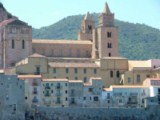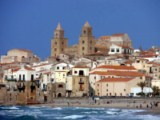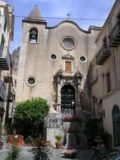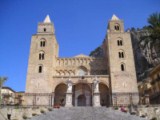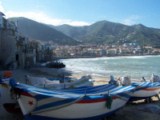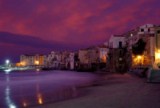|
CEFALU' - SICILY - SOUTH ITALY Cefalý is located in the northwestern part of the island and is one of the most important and famous seaside resorts in Sicily. Some think that its origins date back to the fourth century. Others C. and grew strongly during the rule of the Normans in Sicily. It was later occupied by Byzantines and Arabs. In 1063 it was conquered by the Norman Roger of Hauteville that the reorganized economically and artistically. Cefalu derives its name from the greek Kephaloidion which literally means head for the particular shape of the fortress that dominates. This word later became Cifali and then in Cefalu in the local dialect.
Of great historical interest is undoubtedly the impressive cathedral whose construction was originally intended by King Roger. All visitors are advised to visit Cefalý over the Norman Cathedral, which contains Byzantine mosaics, including the Tavern Great, which remains a tower dating back to Norman and former Palace of King Roger, who had built the cathedral in the center; Mandralisca also include the Museum where you can find a painting by Antonello da Messina Portrait of an unknown and some remains from excavations near Cefalý and the Aeolian Islands, north east of Sicily, the famous Temple of Diana is situated on a hill in the highest part of the city. And then some major craters and well preserved, will attract the attention of visitors to the beach resort. Among these craters stands the famous Clipper tuna dating back to approximately the fourth century. Others C. Be enchanted by the great charm of Cefalu, a land of art, history and traditions. |
||||||||


